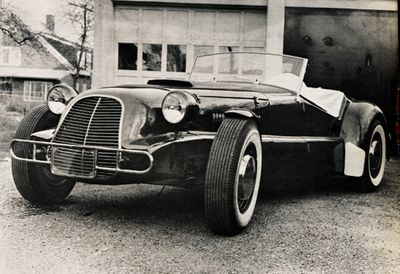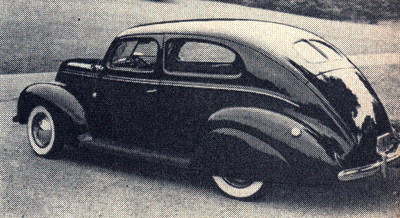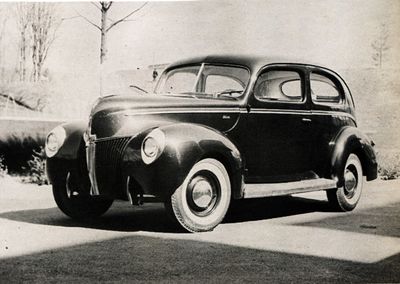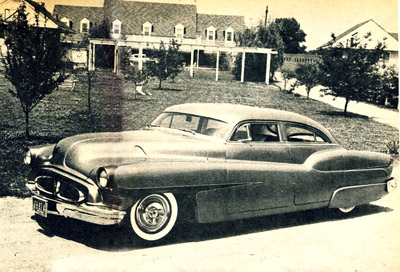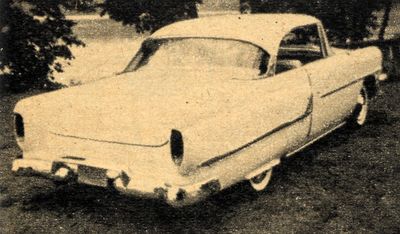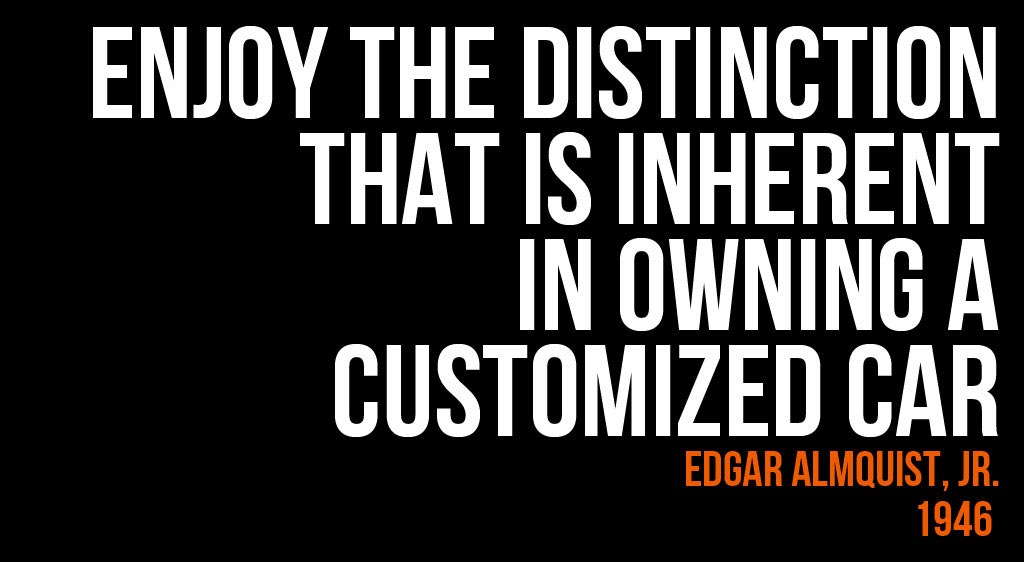Maryland
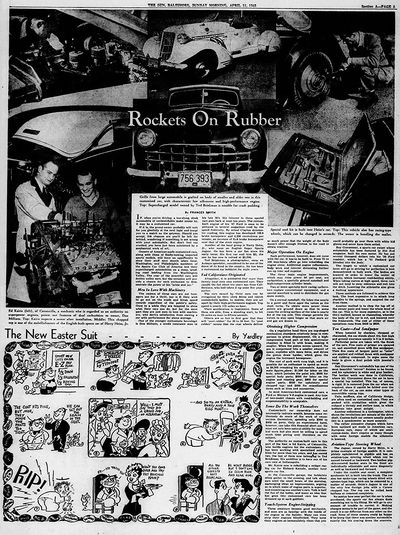
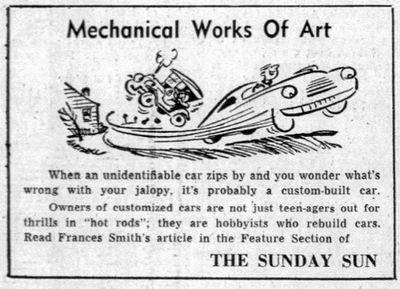

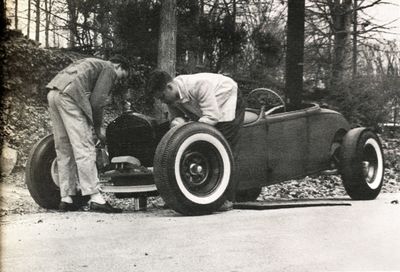
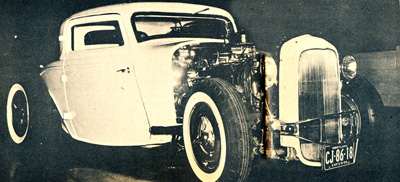


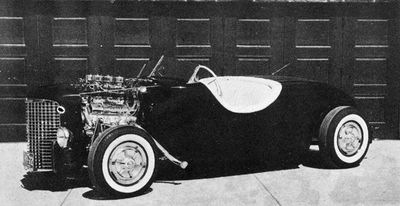
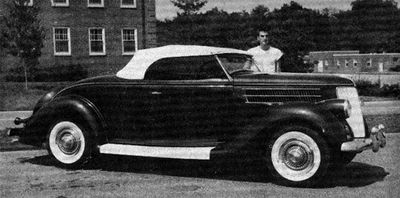




Contents
Rockets on Rubber: The Rise of Baltimore’s Postwar Custom Car Scene
On April 17, 1949, The Baltimore Sun published an article titled “Rockets on Rubber” by Frances Smith, offering a rare window into the emerging custom car and hot rod culture in the Baltimore area. At the time, the movement, popularized in California, was rapidly spreading east, inspiring a new generation of mechanically inclined young men to transform old cars into sleek, high-powered machines.[1]
The article spotlighted a number of Baltimore-area builders and enthusiasts who were redefining what was possible with secondhand autos. Among them was Ed Kairis of Catonsville, described as a highly regarded mechanic and authority on supercharging. Working with Dan Millians, a credit insurance man, the two were part of a growing circle of speed-hungry innovators pushing the limits of performance and design. Their experimental engines, sometimes assembled on kitchen tables, reflected the hands-on, trial-and-error ethos of the time.[1]
Another standout mentioned in the article was Harry Heim, a Baltimorean with a Jaguar that featured a special, chopped removable top. He even crafted a custom-built steering wheel modeled after aircraft yokes, showcasing the creative crossover between aviation and automotive technology that influenced many early hot rodders. But perhaps the most iconic local custom of the era belonged to Ray Giovannoni, whose 1936 Ford convertible had already earned national attention. Known for its clean, stylish lines and expert craftsmanship, Giovannoni's Ford was considered Baltimore’s top custom at the time and had been featured in Hot Rod Magazine, setting a new bar for East Coast custom car builds.[1]
The article noted how Baltimore’s young customizers were often former servicemen—veterans of World War II, who returned with mechanical skills and a hunger for speed. They stripped down old sedans, added performance upgrades like higher compression pistons, dual manifolds, and even homemade superchargers. Weight was reduced by removing non-essentials like fenders and bumpers, and many went so far as to hand-fabricate parts to achieve a personalized look and feel.[1]
While Southern California remained the epicenter of the movement, the Baltimore scene was thriving in its own right. In garages, basements, and makeshift machine shops across the city and suburbs, Maryland's earliest hot rodders and customizers were laying the foundation for a local tradition that blended ingenuity, resourcefulness, and a deep love for the automobile.[1]
Hot Rods of Maryland
Bob Hagerty's 1931 Ford Model A Tudor Sedan - Jade East
Gary Jacquemin's 1931 Ford Model A Roadster
Charles Crowther's 1932 Ford Roadster
Conrad W. Jacobs' 1932 Ford 3-Window Coupe - "The Klondyke Koupe"
John A. Good's 1932 Ford Woody Wagon
Ram-Rods' 1932 Ford Roadster
Earl Phillips' 1936 Ford - The Ford-O-Rocket
Paul Michael's 1940 Ford
Custom Cars of Maryland
Ed Dell's 1936 Ford Roadster
George W. Jackson's 1939 Ford
Robert Howes' 1939 Ford Coupe
Bob Bissell's Sports Roadster
Bud Unger's 1946 Ford Convertible
Skip Gardiner's 1950 Buick
Tom Brooks' 1950 Buick 4-door Sedan
Bob Cusic's 1955 Mercury
Ronald Schmidt's 1957 Chevrolet Corvette
Car Shows of Maryland
Body and Paint Shops of Maryland
Jenkins Body Shop
Unger Auto Body Company
Custom Upholstery Shop of Maryland
Hot Rod and Custom Car Clubs of Maryland
Coach Masters of Wheaton
Ram-Rods
Citizens of Maryland
Bob Bissell
Bob Cusic
Bob Hagerty
Charles Crowther
Conrad W. Jacobs
Earl Phillips
Gary Jacquemin
George W. Jackson
Herbert Unger
Neal Carter
Paul Michael
Ray Unger
Robert Howes
Ronald Schmidt
Skip Gardiner
Tom Brooks
References
Did you enjoy this article?
Kustomrama is an encyclopedia dedicated to preserve, share and protect traditional hot rod and custom car history from all over the world.
- Help us keep history alive. For as little as 2.99 USD a month you can become a monthly supporter. Click here to learn more.
- Subscribe to our free newsletter and receive regular updates and stories from Kustomrama.
- Do you know someone who would enjoy this article? Click here to forward it.
Can you help us make this article better?
Please get in touch with us at mail@kustomrama.com if you have additional information or photos to share about Maryland.
This article was made possible by:
SunTec Auto Glass - Auto Glass Services on Vintage and Classic Cars
Finding a replacement windshield, back or side glass can be a difficult task when restoring your vintage or custom classic car. It doesn't have to be though now with auto glass specialist companies like www.suntecautoglass.com. They can source OEM or OEM-equivalent glass for older makes/models; which will ensure a proper fit every time. Check them out for more details!
Do you want to see your company here? Click here for more info about how you can advertise your business on Kustomrama.

